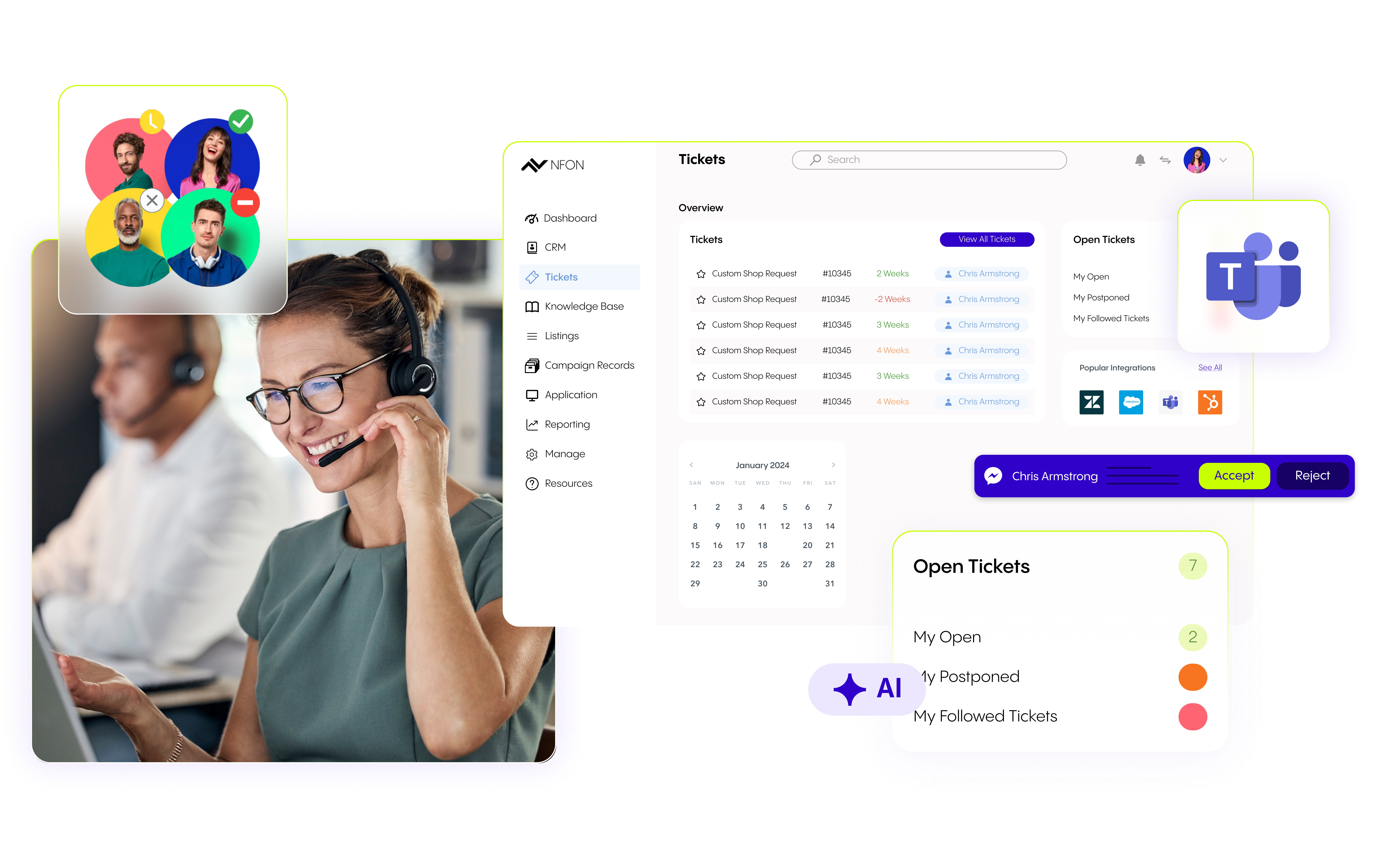Microsoft Teams has revolutionised business communication by consolidating chat, meetings, and collaboration into one unified platform. But when it comes to voice solutions, businesses have multiple options for integrating telephony with Microsoft Teams: SIP Trunking, Direct Routing, and Operator Connect. Choosing the right solution depends on your company’s unique needs, resources, and goals.
In this blog, we’ll break down the differences between these three approaches, explain how they work, and share real-life business scenarios to help you decide which is the best fit for your organisation.
SIP Trunking: The Classic Solution for Flexibility
What is SIP Trunking?
Session Initiation Protocol (SIP) trunking is a method that allows businesses to make and receive voice calls over the internet rather than traditional phone lines. It connects your existing PBX (Private Branch Exchange) system to the public switched telephone network (PSTN) via the internet, enabling your business to handle calls without needing a separate phone line infrastructure.
How It Works:
- SIP trunks are virtual phone lines that connect to your on-premises PBX.
- Voice calls are routed through the internet to Microsoft Teams using a SIP gateway.
- This approach allows you to integrate telephony with Teams while retaining control over your own infrastructure.
Real-Life Example:
A mid-sized financial services firm with an established PBX system wants to gradually shift to Microsoft Teams without losing their existing telephony investment. By using SIP trunking, they can leverage their existing hardware while enjoying the added functionality of Teams, providing a smooth transition to a cloud-based communication model.
Why Choose SIP Trunking?
- Best for: Businesses with existing PBX systems that want to integrate with Teams.
- Flexibility: Offers greater control over call management.
- Cost-Efficiency: Leverages existing telephony infrastructure, reducing upfront investment.
Direct Routing: Full Control and Customisation for Advanced Users
What is Direct Routing?
Direct Routing is a method that connects Microsoft Teams to the PSTN through a third-party telephony provider. This approach uses certified session border controllers (SBCs) to connect Teams to external phone lines, giving businesses complete control over their telephony.
How It Works:
- A third-party SBC is used to link Microsoft Teams to the PSTN.
- Businesses can choose their own telephony provider, allowing for greater flexibility.
- Teams acts as your phone system, while Direct Routing manages external calls.
Real-Life Example:
A large retail chain with multiple international locations wants to centralise its communication across all regions while maintaining control over its call routing. By using Direct Routing, the chain can work with its preferred local carriers, optimise call costs, and have full visibility into call analytics.
Why Choose Direct Routing?
- Best for: Large enterprises with complex communication needs or existing carrier agreements.
- Control & Customisation: Offers complete flexibility over call routing and carrier selection.
- Scalability: Easily supports global operations and multiple locations.
Operator Connect: The Seamless, Managed Solution for Simplicity
What is Operator Connect?
Operator Connect is Microsoft’s latest solution that allows businesses to connect Teams to the PSTN via a certified telecom operator. This approach is fully managed within the Microsoft Teams Admin Centre, eliminating the need for complex hardware or third-party SBCs.
How It Works:
- Businesses select a certified operator directly within the Teams Admin Centre.
- The operator handles the connection, ensuring quick setup and seamless integration.
- No need for additional hardware or on-premises systems.
Real-Life Example:
A fast-growing tech startup with limited IT resources wants to enable Teams calling quickly and efficiently. By choosing Operator Connect, the company can get started in a matter of hours, allowing their remote teams to make and receive calls without needing to manage any infrastructure.
Why Choose Operator Connect?
- Best for: Small to mid-sized businesses with limited IT resources looking for a simple, managed solution.
- Ease of Use: Fast setup with minimal technical requirements.
- Support: Managed by a certified telecom provider, offering peace of mind and reliable support.
Comparing the Solutions: Which One is Right for Your Business?
Comparing the Solutions: Which One is Right for Your Business?
|
Feature |
SIP Trunking |
Direct Routing |
Operator Connect |
|
Flexibility |
High |
Very High |
Moderate |
|
Control |
Moderate |
Full |
Low |
|
Ease of Setup |
Moderate |
Complex |
Simple |
|
IT Involvement |
Medium |
High |
Low |
|
Best For |
Established businesses with existing PBX systems |
Large enterprises with complex needs |
SMBs looking for quick, managed solutions |
|
Cost |
Cost-efficient, reuses existing systems |
Potentially higher due to custom setup |
Subscription-based, straightforward pricing |
Making the Right Choice
Deciding between SIP Trunking, Direct Routing, and Operator Connect ultimately comes down to your business's size, IT capabilities, and long-term communication strategy.
- Choose SIP Trunking if you want to integrate existing systems with Microsoft Teams.
- Opt for Direct Routing if you need complete control over your telephony infrastructure.
- Select Operator Connect if you want a fast, hassle-free setup with minimal management.
Whichever solution you choose, integrating voice capabilities into Microsoft Teams can enhance productivity, streamline communication, and future-proof your business communications.
Ready to transform your business communication with Microsoft Teams? Contact us today to explore the best solution for your needs!
.png)








